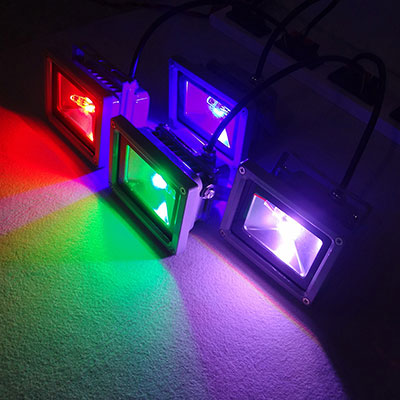Welche Vorteile können Sie durch den Einsatz von LED-Leuchten erzielen?
We all know that LED Lichter are energy-saving. Even with very low wattages, they have been very bright and can meet our requirements. Actually there are still many benefits by using LED lights. Let’s check them below.
Energy-saving
We have mentioned that LED lights are energy-saving above. They can save at least several times of energy than traditional lights such as incandescent bulb, halogen lamp, fluorescent lamp, high pressure sodium lamp, mercury lamp, etc. For example, a 5W LED bulb is equivalent to a 40W incandescent bulb. That means it only consumes 1/8 power! The following is a comparison table of LED lights to traditional lights for your reference.

Long lifespan
The lifespan of LED lights in theory is 50,000 hours. But it is very hard to reach such a long lifespan in practice. Because the lifespan of LED lights will be influenced by the temperature, humidity and the way people use LED lights in real environment. But a good quality LED light can be used at least 3 years or 5 years, even 10 years! It is cool, isn’t it?

Save money
Normally the prices of LED lights are a little higher than traditional lights, but their wattages are lower so you can pay less for electricity. And as we have mentioned above, LED lights have a very long lifespan, then you don’t need to replace them often. So you can save a big cost in the long run.
Protect eyes
Too dim or too bright light and blue light will do harm to our eyes. By using proper color temperature and dimming function of the LED lights can make our eyes reach a comfortable level. On the other hand, LED lights don’t flicker, which will protect our eyes in some extent. We can avoid blue light when we select correct color temperatures. For example, in many libraries 4000K or 5000K color temperature is adopted, because they are the closest to the sun light.

Protect environment
A lot of traditional lights contain harmful chemicals. For example, compact fluorescent light contains mercury which not only pollutes environment but does harm to human body as well. The more compact fluorescent lights are used, the more mercury chemical are accumulated. This problem doesn’t happen on LED lights, and many parts of LED lights can be recycled.
Customize color temperature easily
For the same kind of traditional light, its color temperature is difficult to customize due to the limitations of its light-emitting material. But this is very flexible on LED lights. It is easy to customize warm white (2700K-3200K), neutral white (4000K-4500K), cold white (5000K-5500K/6000K-6500K) or special color temperatures ( RGB, 25000K, 2200K, etc) for LED lights.

Hard to damage
Most traditional lights are made of glass which are easy to damage if dropped onto floors carelessly by people. But most LED lights are made of plastic, aluminum or stainless steel materials, there are no worries even they are dropped onto floors. Only a small part of LED lights contain glass.
Easy to use
There are many troubles when we use traditional lights. For example, when we install fluorescent lamps, we still need to install extra ballast and starters for them, but most LED lights are very easy to use. Except for Niedervolt-LED-Leuchten, most LED lights can work under city electricity directly without any extra components.
There are still many benefits by using LED lights, so we are not able to list them one by one here. But we need to learn the special features and notes of the LED lights when we use them, then we can make the most of them.

Weiterführende Literatur:
- Aus wie vielen Teilen besteht eine LED-Leuchte?
- Wie viele Arten von LED-Leuchten gibt es insgesamt?
- LED-Lichtparameter, die Sie kennen müssen
- LED-Lichtkatalog
- LED-Flutlicht-Katalog
- LED-Straßenlaternen-Katalog
- Katalog für LED-Hallenleuchten
- LED-Maisbirnen-Katalog
- LED-Streifenlicht-Katalog
- DMX RGB RGBW LED-Lichtkatalog
- Katalog für Solar-LED-Leuchten
- Andere LED-Leuchten

